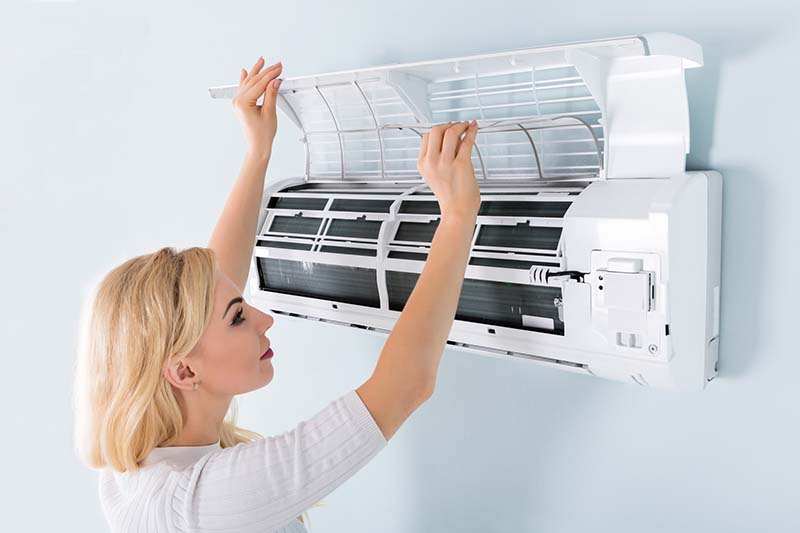Understanding Ductless Mini-Split Systems
Ductless mini-split systems are becoming increasingly popular as a versatile and efficient HVAC solution for residential and commercial spaces. Unlike traditional HVAC systems that rely on ductwork to distribute air, ductless mini-splits operate without ducts, offering flexibility in installation and improved energy efficiency. This article explores what ductless mini-split systems are, how they work, their advantages, installation considerations, and maintenance tips.
What Are Ductless Mini-Split Systems?

Ductless mini-split systems, also known simply as mini-splits, consist of an outdoor compressor unit and one or more indoor air-handling units. These units are connected by refrigerant lines and electrical wiring, allowing them to operate independently. Each indoor unit is typically mounted on a wall or ceiling in the room it serves, providing targeted heating and cooling where needed.
Components:
- Outdoor compressor unit
- Indoor air-handling units (evaporators)
- Refrigerant lines and electrical wiring
Ductless mini-split systems are available in various sizes and configurations to suit different heating and cooling needs, from single-zone units that serve one room to multi-zone systems that can heat or cool multiple rooms independently.
How Do Ductless Mini-Split Systems Work?
Ductless mini-splits work on the same basic principles as traditional air conditioning systems but without the need for ducts. Here’s a brief overview of their operation:
Refrigerant Cycle
- The compressor unit outside pumps refrigerant through the lines to the indoor units.
- Indoor units release cooled or heated air into the rooms.
Before the refrigerant cycle begins, the desired temperature is set on the indoor unit’s thermostat. Once the indoor unit detects the temperature variance, it communicates with the outdoor unit to start the refrigeration cycle. This cycle runs until the desired temperature is achieved, at which point the system adjusts its output to maintain comfort. Unlike central HVAC systems that heat or cool an entire building, ductless mini-split systems offer zone-specific temperature control, optimizing energy efficiency and comfort.
Advantages of Ductless Mini-Split Systems
Ductless mini-split systems offer several advantages over traditional HVAC systems, making them a preferred choice for many homeowners and businesses:
Energy Efficiency:
- Ductless systems do not suffer from energy losses associated with ductwork.
- Individualized temperature control reduces energy waste by only conditioning occupied spaces.
Flexible Installation:
- Requires only a small hole to connect the indoor and outdoor units, reducing construction and installation time.
- Ideal for retrofitting older buildings or spaces where ductwork is impractical or impossible.
Improved Indoor Air Quality:
- Without ducts, there is no buildup of dust, allergens, or other contaminants that can accumulate in traditional ductwork.
- Some models offer advanced filtration options, further enhancing indoor air quality.
Quiet Operation:
- Indoor units are typically quieter than traditional HVAC systems because the compressor unit is located outside.
- Provides a more comfortable and peaceful indoor environment.
Design Flexibility:
- Indoor units come in various styles and sizes to blend seamlessly with different interior aesthetics.
- They can be installed in different zones, allowing for customized comfort in each area.
Installation Considerations

Before installing a ductless mini-split system, several factors should be considered to ensure optimal performance and efficiency:
Location:
- Choose strategic locations for indoor units to maximize airflow and minimize obstructions.
- Outdoor unit placement should consider accessibility for maintenance and noise considerations for neighbors.
Sizing:
- Proper sizing of the system is crucial for efficient operation.
- An HVAC professional can calculate the heating and cooling loads to determine the appropriate capacity.
Electrical Requirements:
- Ensure that the electrical system can handle the additional load of the mini-split system.
- Consult with an electrician if upgrades are necessary.
Permits and Regulations:
- Check local building codes and regulations regarding HVAC installations.
- Obtain any necessary permits before starting installation.
Maintenance Tips for Ductless Mini-Split Systems

To ensure the longevity and efficient operation of your ductless mini-split system, regular maintenance is essential:
Filter Cleaning:
- Clean or replace filters according to the manufacturer’s recommendations.
- Dirty filters restrict airflow and reduce efficiency.
Coil Cleaning:
- Keep the indoor and outdoor coils clean and free of debris.
- Schedule professional coil cleaning annually to maintain efficiency.
Inspect Insulation:
- Check refrigerant lines for leaks or damage.
- Inspect insulation around lines to prevent energy loss.
Professional Inspections:
- Schedule annual maintenance with a qualified HVAC technician.
- Technicians can identify and address potential issues before they become costly repairs.
Monitor Performance:
- Regularly monitor the system’s performance and temperature settings.
- Address any unusual noises or changes in performance promptly.
By following these maintenance tips, you can ensure that your ductless mini-split system operates efficiently and provides reliable comfort throughout the year.
Conclusion
Ductless mini-split systems offer a modern solution to heating and cooling needs, combining energy efficiency, flexible installation options, and enhanced comfort control. Whether you’re retrofitting an older home, adding temperature control to new construction, or seeking to improve indoor air quality, ductless mini-splits provide a versatile and effective HVAC solution. Understanding their components, operation, advantages, installation considerations, and maintenance requirements empowers homeowners and businesses to make informed decisions about their HVAC systems. For personalized recommendations and professional installation, consult an HVAC expert to determine the best ductless mini-split system for your specific needs.
Interested in Ductless Mini-Splits?
Contact our experts to learn how ductless systems can benefit your home or business.

